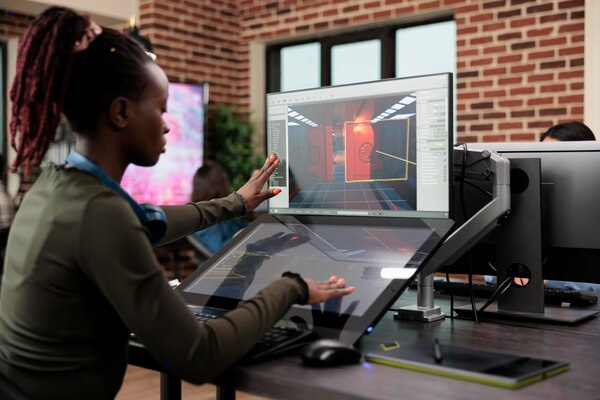Discover the Latest Innovations in Game Design
The world of game design is in constant evolution, with breakthrough innovations shaping the way we play and perceive games. From advancements in artificial intelligence to groundbreaking developments in virtual reality, these innovations reflect an exciting era for both game developers and players. Here's a closer look at some of the most impressive trends and technologies that are transforming the gaming landscape today.
Artificial Intelligence and Procedural Generation
Artificial intelligence (AI) is revolutionizing game design by creating more intelligent, adaptive, and responsive NPCs (non-player characters). AI-driven NPCs can learn from player actions, adapt their strategies, and provide more personalized gameplay experiences. Additionally, procedural generation, which uses algorithms to create complex game content dynamically, allows for virtually endless variability. Games like "No Man’s Sky" showcase how procedural generation can produce vast, unique, and immersive worlds, filled with unexpected surprises and challenges.

Virtual Reality and Augmented Reality
Virtual reality (VR) and augmented reality (AR) are pushing the boundaries of immersive gameplay. VR headsets, such as the Oculus Rift and PlayStation VR, transport players into entirely new worlds, offering a level of immersion that traditional gaming can’t match. Meanwhile, AR games overlay digital elements onto the real world, as seen in popular titles like "Pokémon Go". These technologies not only enhance the sensory experience but also open up new opportunities for interactive and collaborative gameplay.
Cross-Platform Play
The rise of cross-platform play is breaking down the barriers between different gaming systems, uniting players across various devices and consoles. This innovation allows friends to play together regardless of whether they own a PC, Xbox, PlayStation, or mobile device. Games like "Fortnite" and "Minecraft" have successfully implemented cross-platform play, fostering a more inclusive and connected gaming community.
Cloud Gaming
Cloud gaming is set to duyol the accessibility and convenience of gaming. Services like Google Stadia, NVIDIA GeForce Now, and Microsoft’s Xbox Cloud Gaming (formerly Project xCloud) allow players to stream games directly to their devices without needing high-end hardware. This means that anyone with a stable internet connection can enjoy the latest titles with minimal latency, democratizing access to cutting-edge gaming experiences.
Innovative Storytelling Techniques
Game developers are increasingly exploring novel storytelling techniques to engage players on a deeper emotional level. Interactive storytelling, non-linear narratives, and choice-based consequences are becoming more prevalent, offering players a greater sense of agency and investment in the game’s world and characters. Titles like "The Witcher 3: Wild Hunt" and "Detroit: Become Human" exemplify how rich, branching narratives can create memorable, impactful experiences.
High-Fidelity Graphics and Realistic Physics
The relentless pursuit of realism in games continues with the development of high-fidelity graphics and sophisticated physics engines. Ray tracing technology, which simulates the way light interacts with objects, produces stunningly realistic lighting and reflections. Coupled with powerful hardware, today’s games can achieve unprecedented visual quality and physical accuracy, from lifelike character models to dynamic environmental effects.
Inclusive Game Design
Diversity and inclusion are becoming central themes in modern game design. Developers are increasingly mindful of representing different cultures, genders, and abilities in their games. This commitment to inclusivity is reflected in both the stories told and the characters that players can embody. Games like "The Last of Us Part II" and "Celeste" not only provide representation but also tackle complex social issues, broadening the scope of what narratives in games can achieve.
Sustainable and Ethical Practices
As environmental concerns grow, the gaming industry is also exploring sustainable and ethical practices. Developers are considering the carbon footprint of game production, opting for digital distribution, and using energy-efficient technologies. Additionally, there is a push towards fair labor practices and reducing the environmental impact of gaming hardware.
The future of game design is a tantalizing blend of technology, creativity, and social awareness. As these innovations continue to evolve, they promise to deliver richer, more engaging, and genuinely transformative experiences for gamers worldwide. Whether you're a developer or a player, there's no doubt that the best is yet to come in the ever-expanding universe of gaming.